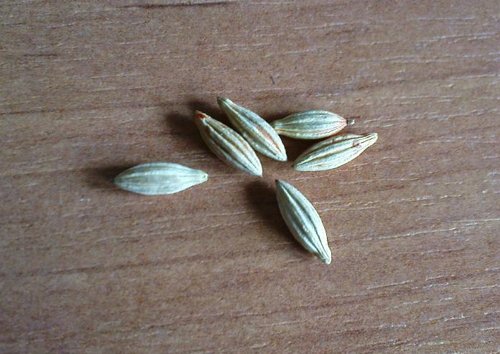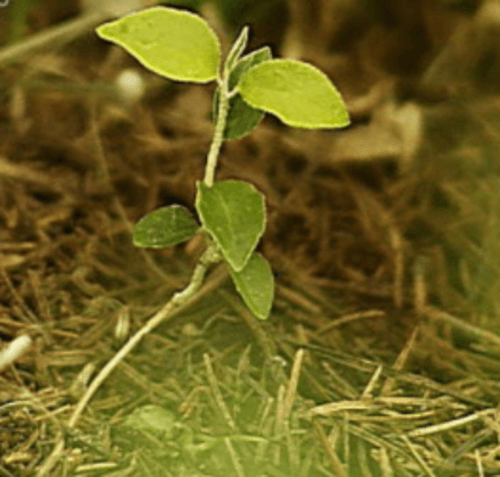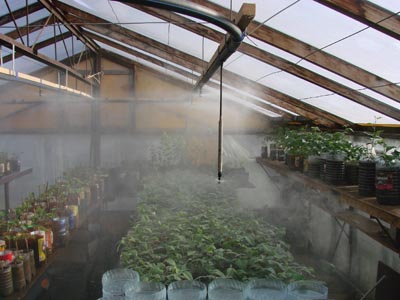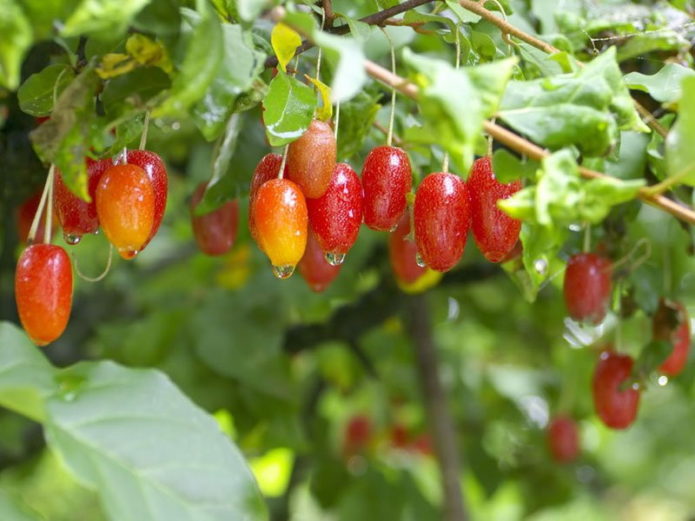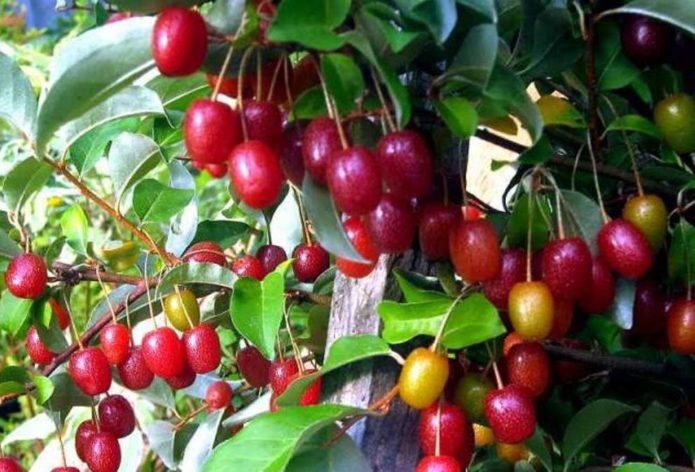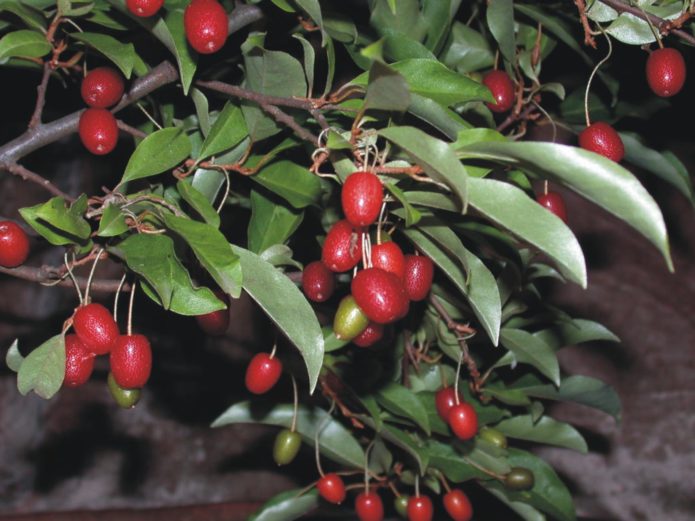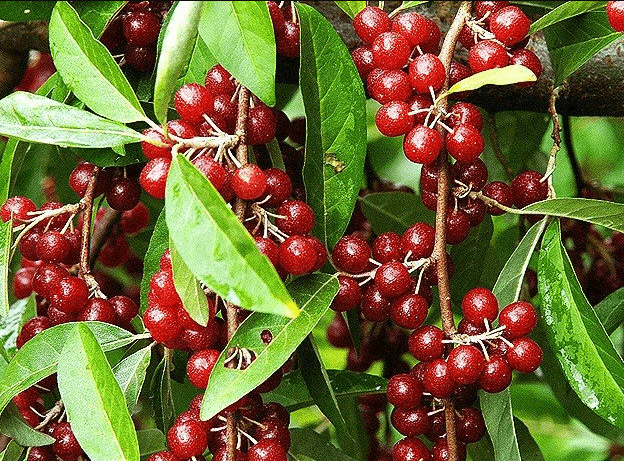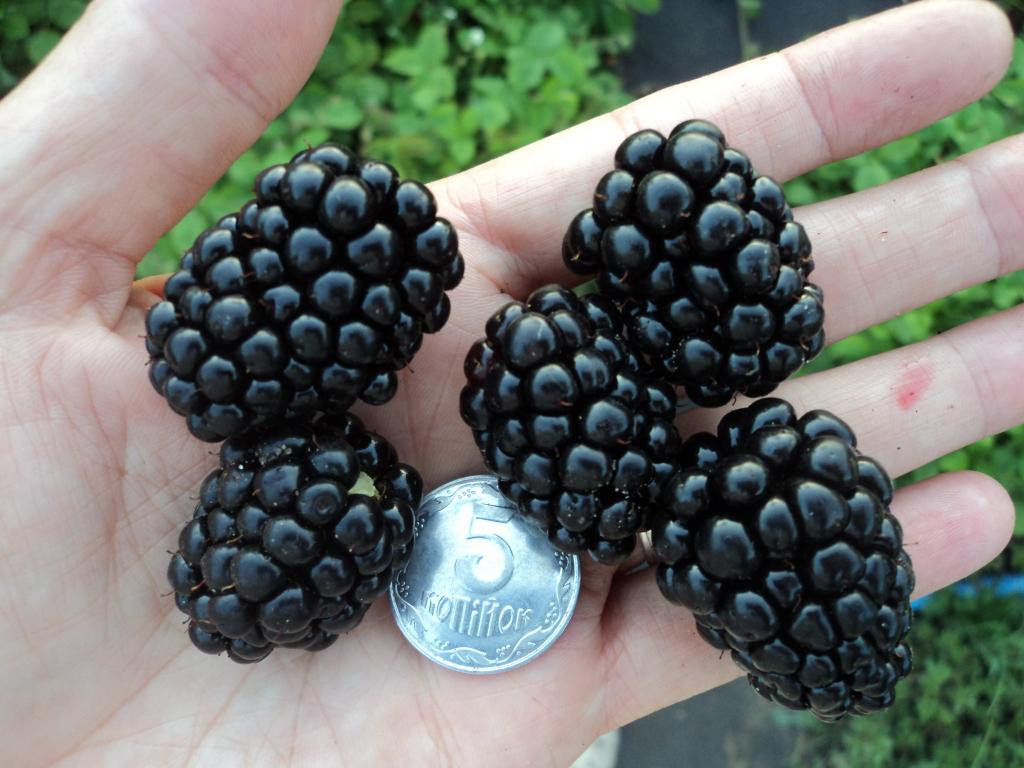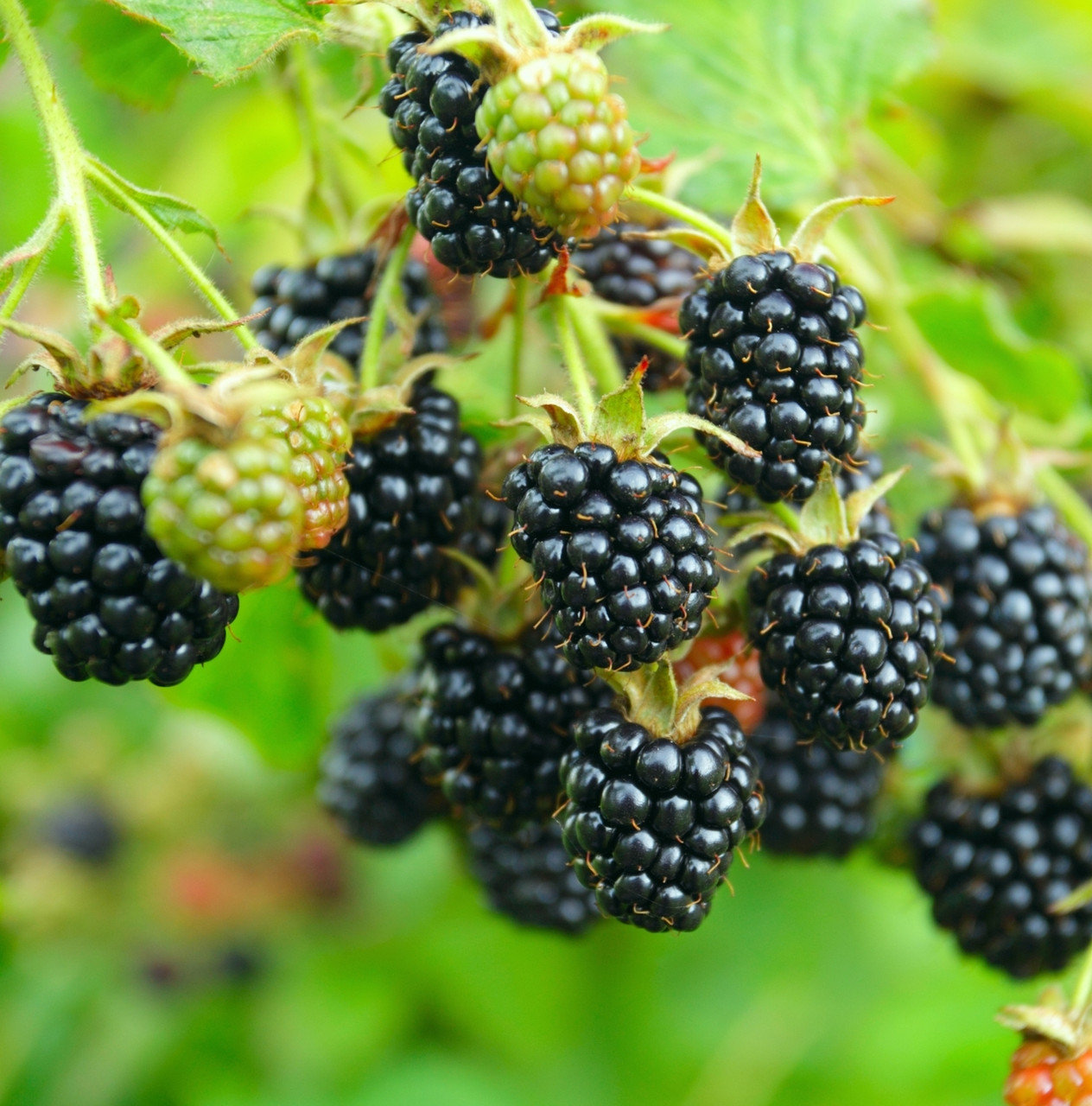Gumi, or multiflorous oak, is a shrub with fragrant flowers, tasty and healthy berries, undemanding to care for. It is surprising that such a culture is not popular and even unknown to many gardeners. But many varieties have been bred that grow well in all regions of Russia, Ukraine and Belarus.
Content
Description of culture
Gumi is native to Asia, the plant has spread throughout the world from China, Korea and Japan. In Russia, the multiflower sucker has long been grown on Sakhalin, where the Japanese brought it. This berry bush is well-known in Ukraine; jam made from its fruits mixed with mulberry is especially popular here.
The shrub belongs to the family of suckers, which also includes the well-known sea buckthorn. Compared to her, gumi has adopted all the best and is devoid of her negative qualities. In particular, the multiflorous goose:
- not divided into male and female bushes, its flowers are bisexual;
- does not form overgrowth or very little of it;
- there are no thorns on the shoots or they are short and invisible;
- berries hang on long stalks, ripe ones are easily separated from them.

The fruits of gumi are similar to sea buckthorn berries, but are red, speckled, and hang on long stalks
But there are also similarities. Gumi fruits have the same size (1.5–2 cm) and elongated shape. However, when fully ripe, the berries turn red with golden specks, they are sweet with a slight astringency. The taste is reminiscent of overripe dogwood, with notes of pineapple, cherry, apple, grapes. One elongated bone is hidden inside the fruit. Even in full maturity, it remains soft, you can chew it and feel the taste of a nucleolus (reminiscent of an unripe sunflower seed). Gumi berries do not crumble. They are eaten fresh, dried, frozen, processed into preserves, compotes, jams, pie fillings, added to sweet and sour sauces for meat.
The fruits of gumi contain essential amino acids, vitamins, tannins and pectin substances. In Japan, gumi is called the berry of longevity, is used as a multivitamin supplement, as a medicine for cardiovascular diseases. The fruits have tonic properties. Even leaves are rich in vitamin C, they are dried, used for brewing tea.
The gumi shrub grows up to 2 m in height and width. Like the sea buckthorn, its roots are located superficially, extend 1.5 m beyond the crown perimeter, and are able to capture nitrogen from the air. That is, the plant is able to feed itself and make the soil around the bush fertile. Vegetation begins as soon as the ground thaws. The leaves of gumi are similar in shape to cherry-colored, on the upper side they are dark green, on the lower side they are silvery. Flowering occurs in mid to late May. At this time, thanks to the gumi, there is an amazing aroma in the garden. The flowers are elongated, depending on the variety, snow-white, yellow, cream. And after 30–45 days, in late June or early July, the fruits ripen.Fruiting lasts about a month. Productivity - 8-13 kg per bush.
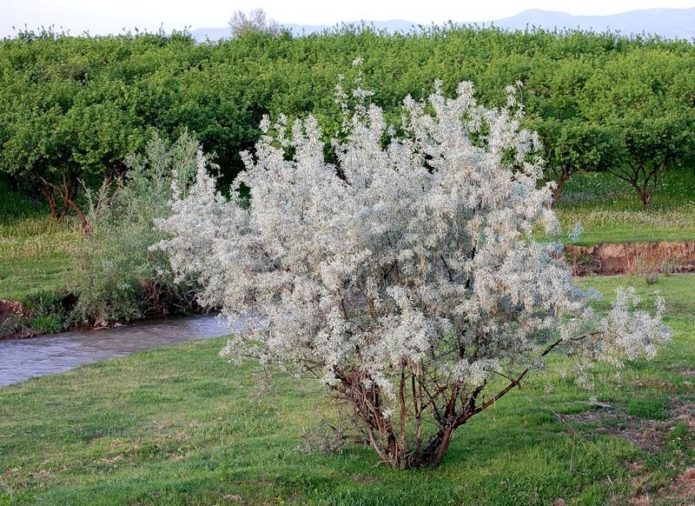
Gumi grows as a bush, there is no trunk, during flowering it is very beautiful, exudes a strong pleasant aroma
Seedlings begin to bear fruit in the 5-6th year, seedlings from cuttings - in the 3-4th. The disadvantages are the slow growth of seedlings in the first 2 years and poor winter hardiness. All shoots can freeze to the ground. But the culture has a high regenerative capacity. After 3-4 years, a lush bush will again grow in place of the frozen one.
Video: about the features of the multifloral sucker
Gumi growing technology
It is possible to grow this amazing culture using the technology loved by everyone: planted and forgotten. Gumi does not get sick and is not even affected by omnivorous aphids. The main thing is to choose the right place and plant it, and in regions with severe winters, protect it from frost. Everything else is drought watering, mulching, sanitary pruning.
Place for gumi and landing
Although the sucker has bisexual flowers, that is, each has a pistil and stamens, but the bush bears fruit better when there are 1-2 more seedlings of a different variety in the neighborhood. Often gardeners complain that their gumi has been growing for 5–6 years already, that it blooms well, but does not tie berries. One of the reasons is that a variety was planted that is unable to self-pollinate. When planting several seedlings, leave a distance of 2-3 m between them. Choose a sunny place where there are no drafts. In the shade, the sucker also bears fruit, but not so abundantly, the berries will ripen longer, accumulate less sugar.
Buy seedlings no more than 1–2 years old, until their root system has grown and remains compact. Older specimens are difficult to take root. It is recommended to plant gumi in spring. In the fall, the bush does not have time to properly gain a foothold in the ground, the bark on the shoots and buds does not mature well. As a result, in winter, young plants are severely damaged by frost.
Planting stages:
- 2–3 weeks before planting or in the fall, dig a hole 50 cm in diameter and depth.
- Lay a drainage layer on the bottom. It is advised to use stones, but pieces of tree branches can be stacked. Drainage is needed only for young bushes so that their still small and weak roots do not rot. By the time the gumi is well established in a new place, the roots will go far beyond the planting pit, the drainage from the branches will rot and turn into fertilizer, and the stones will remain, but already as unnecessary ballast.
- Mix the soil removed from the pit (top 30 cm) 1: 1 with humus, add 0.5 liters of wood ash.
- Fill the pit with the prepared soil mixture. Before planting, time must pass for the nutrients to be converted into an accessible form with the help of bacteria and earthworms and mixed.
- On the day of planting, make a hole 6-7 cm deeper than the length of the root, this is exactly how much you need to deepen the root collar.
- Plant gumi, water and mulch.
Care of young and fruiting bushes
The multiflorous oak is a drought-resistant crop, only young bushes need regular watering in the first year after planting. Give them water (10–20 L) each time the soil under the mulch dries up. Water fruiting bushes only in drought, when there is hot weather without rain for about a week. The watering rate is 30–40 liters per plant. Always keep the soil loose, as the mulch decays, add a new one.
Gumi itself extracts nitrogen, which means that it does not need nitrogen fertilizers and organic matter. However, gardeners noticed that on poor soils, large lentils are formed on the roots, absorbing nitrogen from the air, and on fertilized lands they are either not there, or they are very small. This means that by fertilizing the land, we make life easier for the shrub, it feeds from the ground, more energy can be directed to building up shoots and a rich harvest.
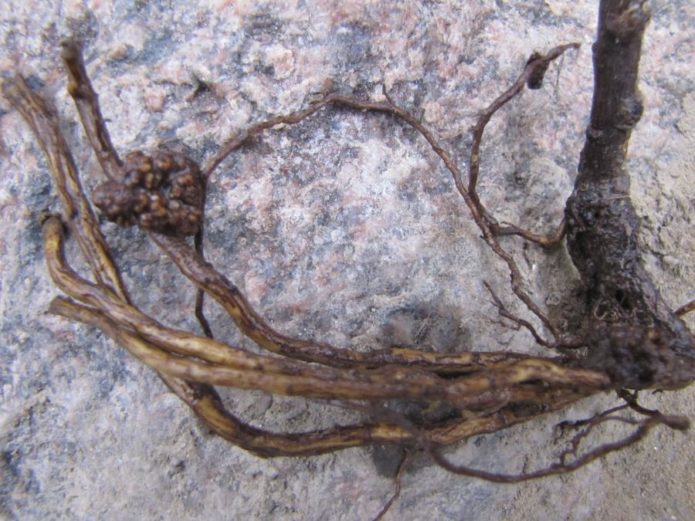
Nodule formations on the roots of gumi allow to bind atmospheric nitrogen, absorb and mineralize organic matter from the soil, convert them into an easily assimilable form
There is no need to apply mineral fertilizers under the gumi; it is enough to regularly add humus, compost and even cut grass as mulch. All this will rot and enrich the land. In spring and autumn, you can sprinkle 1-2 glasses of wood ash under a bush and loosen it. Pruning is only required sanitary, that is, remove only dry, crooked and broken branches annually. After 13-15 years, rejuvenate - cut off all the stems near the ground. A young bush will grow from the root.
Features of cultivation in different regions
In the northern regions and in the middle lane, it is a lot of trouble to remove frozen shoots. But this can be avoided if for the winter all branches are bent to the ground, like raspberry, or covered like grapes.
- In Siberia, where winters are snowy, it is enough to bend the branches so that in winter they are covered with snow.
- In the middle lane, the Moscow region, the Leningrad region, Belarus and other territories, where thaws often occur in the middle of winter, and then frosts come again, gumi needs to be covered. Lay the trunk circle with a thick layer (10-15 cm) of fallen leaves, spruce branches, hay. The branches can be tied together and wrapped in agrofibre, or bent and covered with the materials already listed. The main requirement is that insulation should be light and breathable.
- In Ukraine and southern Russia, there is no need to bend down and cover. Local gardeners say that gumi rarely freezes, once every few years. But in such regions there are often droughts, which means that the shrub will have to be watered several times per season.
Video: gumi in Ukraine
Of course, you need to buy zoned varieties: for the southern regions, drought resistance is important, for a harsh climate - winter hardiness. Many gardeners who have been growing gumi for several years wonder how they can bend tight lignified branches to the ground. The bush is accustomed to this annually and from youth. In June, the still flexible young stems are tilted to the ground, to the level at which snow lies in winter, pinned or tied to stakes. By the way, this method is also useful for those who want to breed their goof. After all, rooting by layering is the most effective way, and drooping branches are very convenient to drop in.
Reproduction of the multifloral sucker
There are three popular breeding methods for gumi. Rooting the layers gives 100% results. Gumi propagates very simply by seeds, germination rate is 50–90%. With green cuttings, the yield of seedlings is 50%. As a result of seed reproduction, you will get seedlings that do not repeat the varietal properties. Cuttings and layering are free from this drawback.
Rooting cuttings
In spring, bend young flexible shoots to the ground. In those places where they touch the soil, make grooves 10–15 cm deep. Lay the shoots and dig in, the tops should remain on the surface. If the branches tend to straighten, pin them with wire or press them down with bricks. By the fall, roots will grow on the shoots, but it is better to postpone the transplant until spring.
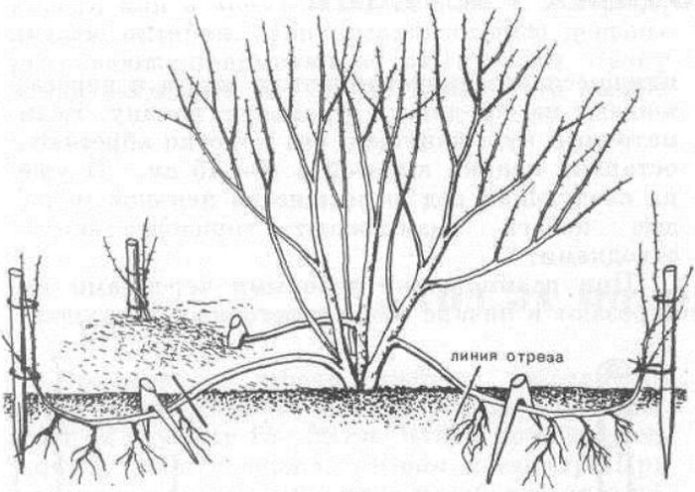
The shoots in the buried part have given roots, together with the tops left outside, they will become your seedlings
Let the future seedlings overwinter with the mother bush. In early spring, free the branches from the load or hairpins, carefully dig them out of the ground, cut them off from the bush. You can plant it in a permanent place or grow small gumi in a separate bed.
Video: digging in horizontal branches with cutting the bark
Sowing gumi seeds
Few people decide on time-consuming stratification, when seeds are placed in a humid environment (peat or sand) and kept from autumn to spring in a refrigerator (+ 0.5 ... +1.5 ⁰C), periodically checking and ventilating. You can do without these manipulations. Gardeners who grow gumi sometimes notice self-sown seedlings under mature bushes. This means that you can grow this crop and sowing seeds directly into the ground.
Collect ripe gumi berries. Remove the seeds and sow them immediately. Do not dry out.If it is not possible to plant now, wrap in a damp cloth and store in the refrigerator. As a result of direct seeding into the ground, the germination rate is low. Some bones lie in the ground for 2-3 years and only then germinate. And then on condition that all this time they were in a humid environment, for example, in the shade of the dense crown of the mother bush. Experiment with different sowing dates, perhaps you will develop your own technology for growing gumi from seeds.
Green cuttings
This is the most difficult and unreliable method. Cut the cuttings at the end of June, when the annual growths reach a length of 20-30 cm. For reproduction, take their middle part (without the top) with 2-4 leaves and dip them into a solution of a root formation stimulator, for example, Kornevin, Epin, Energen, or others.
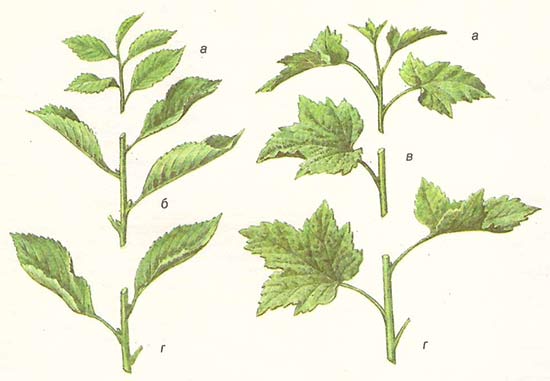
The tops (a) are not suitable for rooting - they are still thin, herbaceous, the base (d) may already be lignified, therefore, the middle part (b) with 2-4 leaves is taken
The substrate is needed loose, sawdust, peat, old compost are suitable. The cuttings are immersed so that the lower buds are in the ground, and the upper ones are above it. Then you need to create conditions: heat (+ 25 ... +30 ⁰C) and humidity (90–95%). In this case, the substrate should be moist, but not flooded. In large farms, fogging installations are used; on a personal plot, you can build a mini-greenhouse from arcs and film. It is important not to overheat the cuttings! Adjust the temperature with ventilation.
The appearance of new leaves on the cuttings means that they have taken root. Reduce the humidity and temperature gradually over the course of two weeks by opening the greenhouse little by little. For example, in the first days, open only one end, in the next two, then lift the film along the length of the bed, etc. In winter, the cuttings are stored in a cellar or refrigerator at a temperature of 0 ... +3 ⁰C. If you doubt such storage or is not possible, then leave them in place, cover them with spruce branches before the onset of winter, and plant them in the spring.
Video: green grafting for beginners
Gumi varieties for your site
In the register of breeding achievements, the plant is listed under the name of the multifloral goose, and gumi is its Japanese name. Eight of the nine registered varieties were bred by the Sakhalin Research Institute of Agriculture. The ninth grade - Taisa owes its appearance to the breeder Kolbasina E.I., but she also worked on the island of Sakhalin. All gumi from the State Register can be grown in any region of the Russian Federation, as well as in Belarus and Ukraine.
Taisa can be recognized by a small bush (1.5 m) and egg-shaped berries. Shoots are compact, there are thorns, but they are short and located only in the lower part of the bush. The leaves are small, pointed in the form of a wedge at the base. Flowers also do not shine in size and color - small and pale. Each berry weighs about 1.2 g, the taste is sweet, with sourness, without astringency, estimated at 4.5 points. An early variety, one of the oldest, bred on Sakhalin back in the 60s. Its main advantages are the dessert flavor of berries and high winter hardiness. In a snowy winter, Taisa is almost completely covered with snow. But the yield is suspiciously low - only 900 g per bush.
Moneron was registered in the same year as Thaisa. It was created for the Sakhalin climate with long and snowy winters, therefore it tolerates frost well. The bush is of medium height (1.5–2 m), slightly spreading. The leaves are larger than those of Taisa, forming a right angle at the base. Thorns are located at the bottom of the shoots. The berries weigh 1.5 g, they contain more sugar and acids, but there is astringency. Therefore, the taste score does not exceed 4 points. The variety belongs to the mid-season. The yield in the State Register is indicated in centners per hectare - 120. On the websites of sellers they write about the high yield - 8-12 kg per bush, give a tasting score of 5 points.
Indeed, Moneron is the most productive of all gumi. The average for this crop is 90 c / ha.
Krillon is a late ripening variety. The shape and size of the bush does not differ from Moneron. It is also winter-hardy, the yield is lower, but remains high - 103 c / ha. Berries are rated by professional tasters at the highest score - 5. The taste is sweet, with a slight astringency. The fruit contains 11% sugar and 110 mg of vitamin C for every 100 g of the product.
Gumi Yuzhny is another excellent student with the highest mark for the taste of berries. They are even sweeter than Krillon, but contain less vital ascorbic acid - 0.93% (93 mg /%). The variety is mid-season, the shape of the bush is compressed, medium spreading. The berries are large - 2.3 g, dark red with silver specks on the skin. The leaves on the back are also silvery. The southern one looks very beautiful in the garden. Despite the name, winter hardy. The yield is slightly less than that of Krillon - 90 c / ha.
There are 4 more varieties with characteristics similar to the South:
- early ripe Shikotan (95 kg / ha);
- mid-season Tsunai (90 kg / ha);
- late Kunoshir (97 kg / ha);
- late Paramushir (84 kg / ha).
All berries weigh about 2 g, for taste they are marked with a score of 5 points. Winter-hardy varieties. But there is another multifloral sucker, from which the cultivation of this culture in Russia began - Sakhalin First. It already goes down in history, because it does not have the advantages of modern gumi. Small berries (1.4 g) are sour rather than sweet, refreshing. There are many acids, but ascorbic acid accounts for only 10.3 mg /%, that is, 10 times less than that of Krillon. Taste score - 4 points. In winter, annual shoots freeze half their length. There is one positive feature - the flowers of the Sakhalin First have a pink tint. This shrub will add delicate shades and subtle aromas to your garden. It is also an early variety.
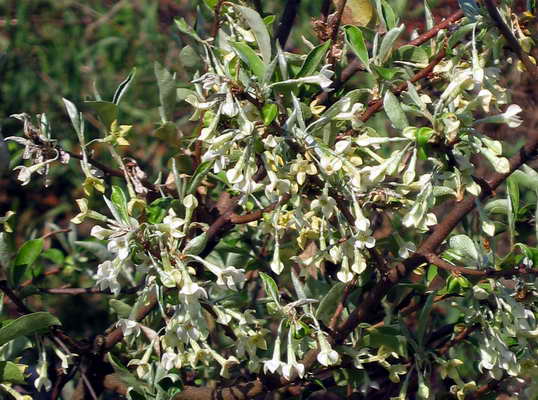
All varieties of gumi, with rare exceptions, have pale-colored flowers, have a yellow or cream shade.
Each variety from the State Register is approved for cultivation in all regions of the Russian Federation. But in regions and areas with a short summer, it is better to grow early varieties, and any gumi is suitable for the southern territories. If you buy not one, but several seedlings, then for better pollination, choose flowering at the same time, that is, with the same ripening period. In the middle lane, you can grow early, mid-season and late varieties. In this case, the healing gumi berries will go to your table all summer long.
Gumi is a plant that is more difficult to find and buy than to grow. The culture, despite all its advantages, is little known and is not represented on the mass market. If you can get seedlings, multiply it and share with your neighbors. Despite the declared winter hardiness, in regions with little snow and frosty winters, cover the shoots.


